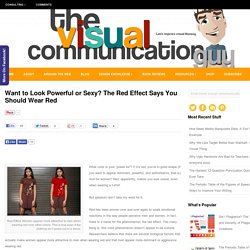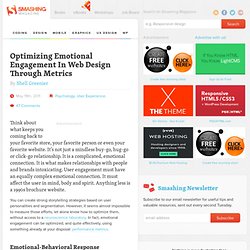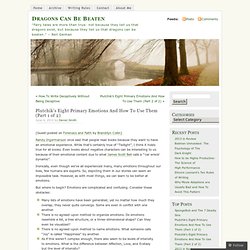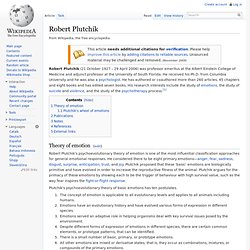

The Designer's Toolbox: Use Color to Evoke Emotion. Color is one of the strongest tools in a designer’s toolbox.

Here’s how you can use it to influence the way a person feels or even behaves. Color is a powerful communication tool that can inspire action, influence mood, and even impact physiological reactions. (Studies suggest that color can affect our blood pressure, metabolism, and eyestrain, and influence our purchasing behavior by up to 80%.) In fact, as designers, we have the power to evoke a wide spectrum of emotions—both positive and negative—depending on the colors we choose in our designs. What Colors Mean in Different Cultures. Symbolizing Culture: The Role of Color in Cross-Cultural Branding.
The eLearning Color Guide: Evoking The RIGHT Emotion - eLearning Industry. Colors Around The World By Culture [Infographic] ~ Visualistan. Want to Look Powerful or Sexy? The Red Effect Says You Should Wear Red. Red Effect: Women appear more attractive to men when wearing red over other colors.

This is true even if the clothing isn’t sexily-cut or a dress. What color is your “power tie”? If it’s red, you’re in good shape (if you want to appear dominant, powerful, and authoritative, that is). And for women? Red, apparently, makes you look sexier, even when wearing a t-shirt. But (please!) Red has been proven over and over again to spark emotional reactions in the way people perceive men and women.
Some of the reasons may make you blush. According to authors Lidwell, Holden, and Butler, chimpanzees “signal their period greatest fertility each month by developing large red swellings around their anus and vulva, which increases their sexual appeal to males.” We can be grateful human men don’t have to look directly at those specific areas of the body to find greater sexual appeal to women. Lidwell et al further clarify that clothing does the same thing to men. Help spread visual literacy. Psychology of Color: The meaning behind what we see.
Perhaps no choice is as vital to marketing as color.

Whether you are selecting the color for a product or for your email marketing campaign, color has tremendous impact on all of us. Subconsciously, we associate different colors with different things. This infographic examines the psychology of color and looks at some common associations of different colors. It shows the overall importance of color to consumers and characteristics of many individual colors, and it also helps show the connection between graphic design and psychology. The numbers are pretty fascinating! While color can be appealing to us visually, a lot more is going on behind the scenes than just an aesthetic.
Our First FREE EBook: Click it with Feeling. 20inShare The concept for this book actually began late in 2009 when I began looking at the psychology behind why someone would want to naturally give someone else on the Internet a citation, or link, to their website.

At that time I wrote a post on SearchEngineJournal.com entitled “The Psychology Behind Link Giving.” During my research for the piece I was introduced to the work of a psychologist named Robert Plutchik. His work on emotional response outlines all behavior, but for me really explained the core concept behind the idea why certain content goes viral online and other content goes unseen. Robert Plutchik, a psychologist and professor of psychology, focused his work on the topic of emotions. Optimizing Emotional Engagement In Web Design Through Metrics. Advertisement Think about what keeps you coming back to your favorite store, your favorite person or even your favorite website.

It’s not just a mindless buy-go, hug-go or click-go relationship. It is a complicated, emotional connection. It is what makes relationships with people and brands intoxicating. User engagement must have an equally complex emotional connection. You can create strong storytelling strategies based on user personalities and segmentation. Emotional-Behavioral Response Relationship Let’s start with the basics: an emotion is a psychophysiological response in your body to a stimulus. Enlarge Your Consciousness in 4 Days, 4 Free - Cover.
Elif ayiter/alpha auer/… /_________repository. Almost all of my current graduate students are working on projects which involve an examination of the nature of emotion.

One thing which they have discovered and which seems to have been cropping up in a lot of class discussions is Plutchik‘s list of emotions and the related wheel which he has charted. Not that I am even remotely qualified to argue this, but for me there are a few problems with Plutchik’s list: The biggest gripe that I have is that he seems to omit power/dominion altogether, while he still includes submission for which he sets up the opposite as contempt – and that really makes me wonder. It seems to me that Plutchik’s view of emotions is rose-tinted altogether. Nearly not enough negative ones. Such as the urge to manipulate, deceitfulness, cruelty. Robert Plutchik's "Wheel of Emotions" Plutchik's Color Wheel Of Emotion. Plutchik’s Eight Primary Emotions And How To Use Them (Part 1 of 2) June 4, 2010 by Daniel Smith [Guest-posted on Forensics and Faith by Brandilyn Collin] Randy Ingermanson once said that people read books because they want to have an emotional experience.

While that’s certainly true of “Twilight”, I think it holds true for all books. Even books about negative characters can be interesting to us because of their emotional content due to what James Scott Bell calls a “‘car wreck’ dynamic”. Ironically, even though we’ve all experienced many, many emotions throughout our lives, few humans are experts. But where to begin? Many lists of emotions have been generated, yet no matter how much they overlap, they never quite converge. Robert Plutchik. Robert Plutchik (21 October 1927 – 29 April 2006) was professor emeritus at the Albert Einstein College of Medicine and adjunct professor at the University of South Florida.

He received his Ph.D. from Columbia University and he was also a psychologist. He has authored or coauthored more than 260 articles, 45 chapters and eight books and has edited seven books. His research interests include the study of emotions, the study of suicide and violence, and the study of the psychotherapy process.[1] User Interaction.